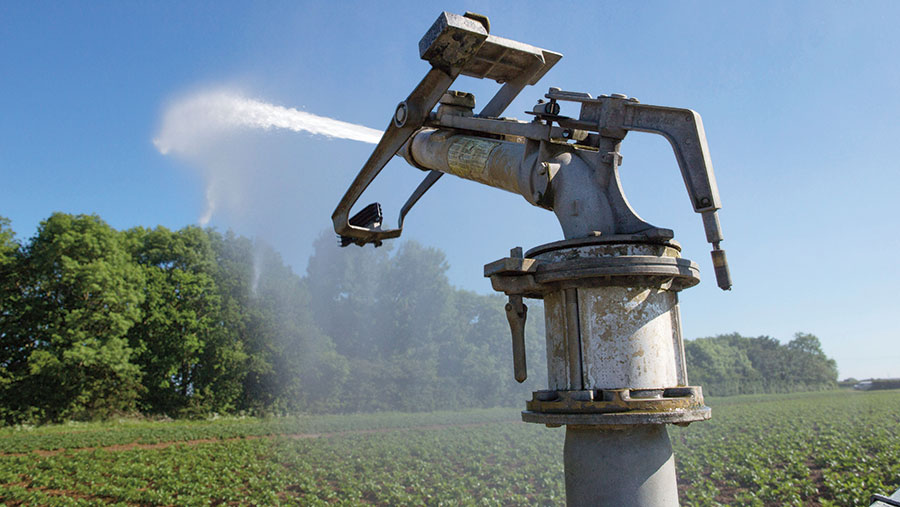Opinion: Give farmers information to tackle water scarcity
 © Tim Scrivener
© Tim Scrivener Farmers are experts in making valuable resources go further – getting the most from every bag of fertiliser, every hour of available daylight, every drop of red diesel.
But what happens when one of their key inputs – water – dries up?
In most parts of the UK, we take it for granted that we’ll always have enough water to farm, and the heavy rainfall of recent weeks may have reinforced that view.
See also: Harvest 2023 – high moisture contents and lodged crops
About the author

Fernando Auat Cheein is associate professor in robotics and autonomous systems at Heriot-Watt University, part of the UK’s National Robotarium.
Yet, last summer’s heatwave highlighted the scarcity of water resources, and parts of the country remain in deficit.
The economics of growing crops such as cereals and oilseeds have made their irrigation unattractive to farmers in the UK.
But our potato, vegetable, and fruit crops are regularly irrigated during dry spells.
That means irrigation restrictions imposed during droughts put huge financial pressure on farmers.
Overseas
Water scarcity may be a relatively new threat to farmers in the UK, but it’s a problem faced all too often overseas.
When I worked in Chile and Argentina, managing irrigation was an essential part of most farmers’ businesses.
It is the same across Continental Europe, with farmers in countries including Italy and Spain being extra careful with water.
At the other end of the Mediterranean, Israel has invested heavily in desalination, so seawater can be used for farming.
Back in the UK, we must start thinking about having more irrigation systems on farms. July 2023 may have been unseasonably wet, but February was the driest month on record, while June was the hottest June ever recorded.
That doesn’t mean we should become reliant on irrigation – instead, we should use it to compensate during droughts.
At the National Robotarium, we are focused on developing solutions to industry challenges such as this one.
Solutions
While traditional solutions have a big role to play in tackling water scarcity, it is the combination of tradition with technology that will give farmers the tools they need.
As an island nation, one of the biggest challenges facing farmers is the fickleness of our weather.
Knowing when to irrigate and when not to irrigate can make the difference between profitability or a lost crop.
Part of the solution to that comes through using sensors to monitor crops.
By measuring the soil moisture, and the plants’ nitrogen content and water stress, we can assess when irrigation may or may not be needed.
Drones, and even satellites, can examine plants using infrared light to assess their leaf temperatures, working out if they’re warmer or cooler than the surrounding air and whether they’re photosynthesising healthily or need help.
Once farmers have the information they need, they can follow appropriate guidelines on irrigation.
Monitoring
Currently, we are developing our first crop monitoring system at the National Robotarium, which will attach to the back of a tractor or other equipment.
We don’t need farmers to become robotics engineers or data scientists – instead, devices like this will be “plug-in-and-play”, gathering more data about crops.
Farmers are skilled at adapting their businesses to a wide variety of challenges.
By giving them the information they need to make decisions, I know they’ll be well placed to tackle the threat from future water scarcity.
